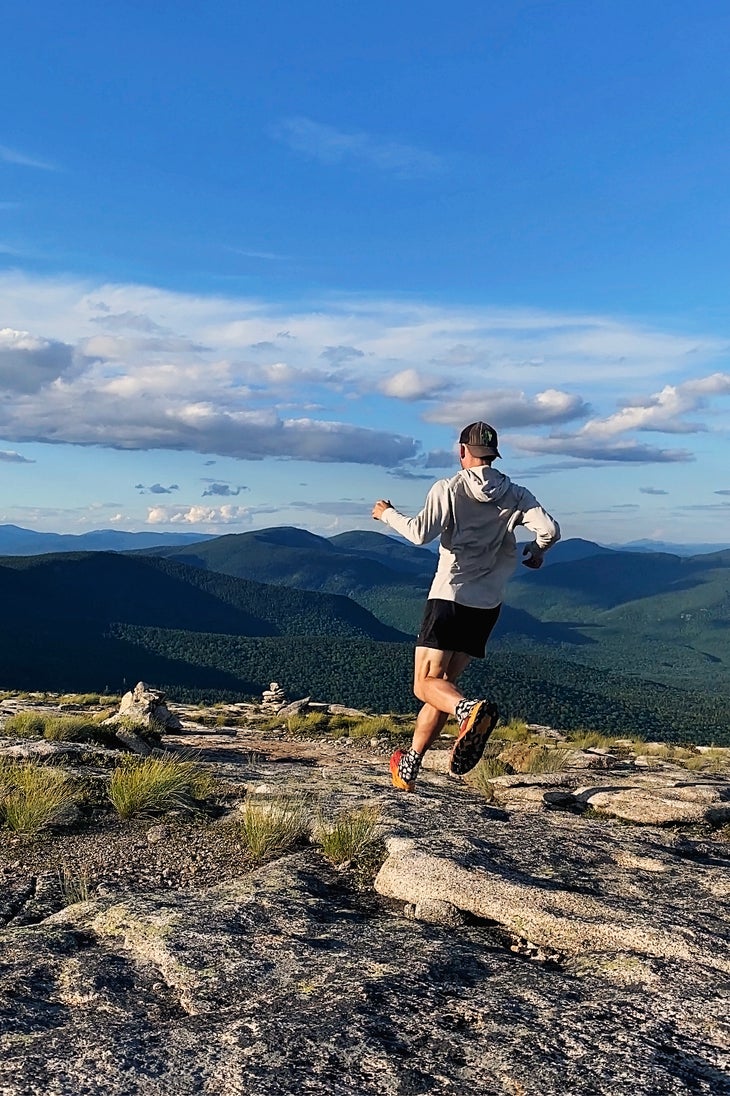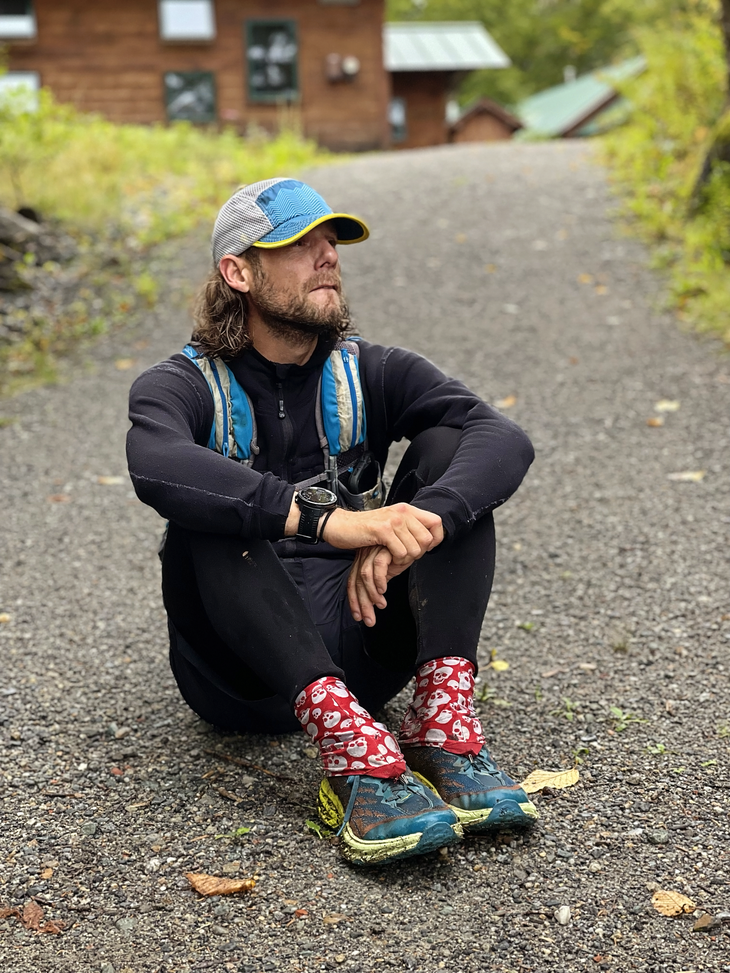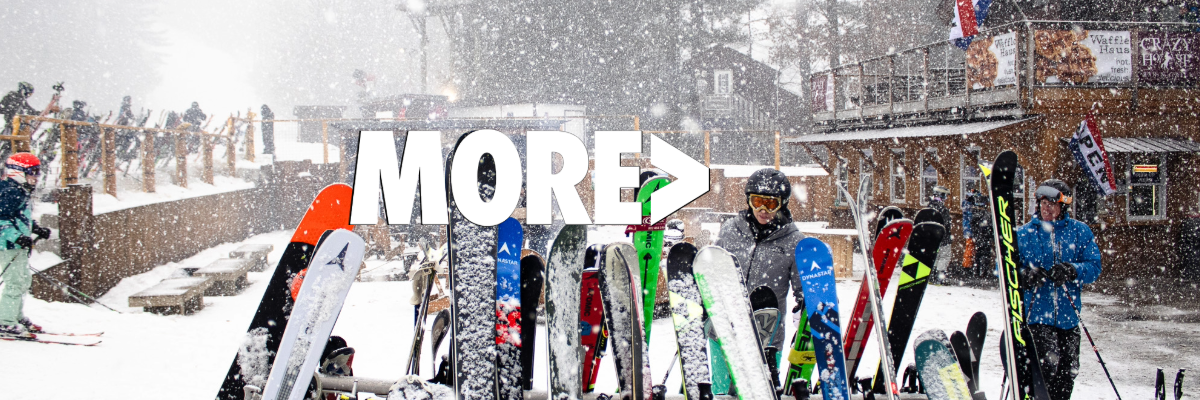Get full access to Outside Learn, our online education hub featuring in-depth fitness, nutrition, and adventure courses and more than 2,000 instructional videos when you sign up for Outside+
Sign up for Outside+ today.
It was quiet at the trailhead, parking spots mostly empty as the sun had set hours ago. Stars out, wind gusting. Now and then, a pair of headlights would sweep across the lot from a lonely car winding its way down New Hampshire’s scenic Kancamagus Highway. The temperatures would drop almost to freezing later that night—summer was giving way to fall in the White Mountains.
Around 9:30 p.m., a pair of headlamps broke from the trees and onto the pavement. Philip Carcia and his hiking partner, Will Peterson, in running vests and shorts, ambled over to a waiting SUV, where local hiker Jo Biscoe handed out pizza and Coke. Carcia had just completed a 40-mile day, one of the final legs of his season-long attempt to hike every documented trail in the Appalachian Mountain Club’s White Mountain Guide in one summer.
“The single-season White Mountain Guide is something that I define as the act of hiking all 650 plus primary trails in the White Mountains guide in a single summer season,” said Carcia. And on September 19, two days after I met him on the Kanc, Carcia completed the project. It was his third try.
Over roughly 90 days, Carcia hiked 1,958.3 miles with a total of 570,369 vertical feet of gain, mostly solo, almost entirely in White Mountain National Forest. He averaged almost 22 miles per day and finished with a White Mountains Direttissima, linking all 48 of New Hampshire’s 4,000-footers together.

The guide itself details 1,600 “clean miles,” but to hike them all ends up being more: “Because of the intricacies of routes in the network, you’re backtracking quite a bit,” Carcia said. The project requires as much logistical challenge as it does physical endurance. The included trails sprawl across the state and even into western Maine. Their sum total is a tangle of lines on the map that most hikers won’t cover in their lifetime.
“If you go into the northern Presidential range, and you look at the networks that you’re responsible for, there are dozens and dozens and dozens and dozens of trails on a single side of a mountain,” Carcia said. “It looks like a plate of spaghetti was thrown against it.”
To make it happen, he spent the summer living mostly out of his converted Toyota Yaris and spending hours driving between trailheads, arranging shuttles, and wrangling logistics with Biscoe’s help. Carcia took only two rest days all summer—one planned, and one forced by a broken phone and auto repairs. As far as he knows, Carcia is the only person to have conceived of or attempted this feat, and now, after his third try (he narrowly missed the single-season designation in 2020 and 2021), he’s the only hiker to have completed it.
The project has required more discipline than almost anything Carcia, a former thru-hiker, has endured. He dedicated the summer months entirely to making miles, ignoring temptations to stop in town for ice cream on a hot day or meet up with friends for dinner, often opting to hike just a little bit further instead.
Carcia said that part of the appeal of the project is the blurring of lines between ultralight backpacking and mountain running, along with the tradition of peakbagging that runs deep in the northeast.
After three grueling summers, Carcia is relieved to be done.
“I remember sitting on the dirt road there that leads up to the trailhead [that marked the completion of the project], and just having a very quiet moment and feeling like the weight of three years had just started to slowly come off of my shoulders,” he said.”

Once he finished hiking, Carcia spent hours over the course of three days checking data to make sure he’d really done it: poring over recordings and maps of the 650 interconnected trails and spurs and giving himself a few days’ buffer before the equinox to go back and hike anything he’d missed.
“You become very sort of intimately aware and connected to the network and its complexities,” he said.
Carcia himself is no stranger to chasing obscure endurance projects in the Whites. In 2019 he completed a record-setting “single-year Grid” of New Hampshire’s 48 4,000-footers, hiking each one every month of the year.
After all this, there are few people who know the White Mountains as intimately as Carcia.
“Going into this project, I already knew that I was going to love it and loathe it the entire time,” he said. “At this point, in a really beautiful way, there aren’t a lot of surprises. It’s really tough hiking, and it’s a long road through the valley and up over the peaks and back to where you started. But you know, I love it nonetheless.”
